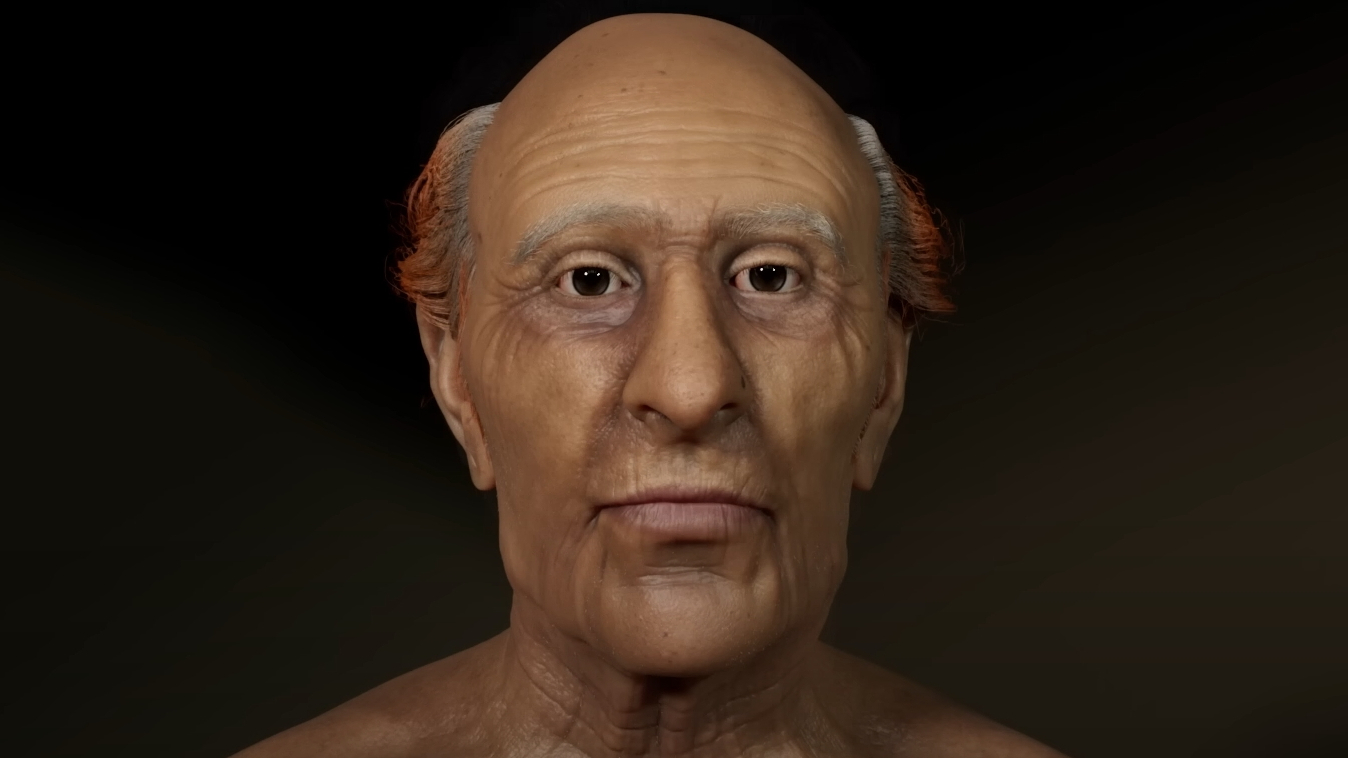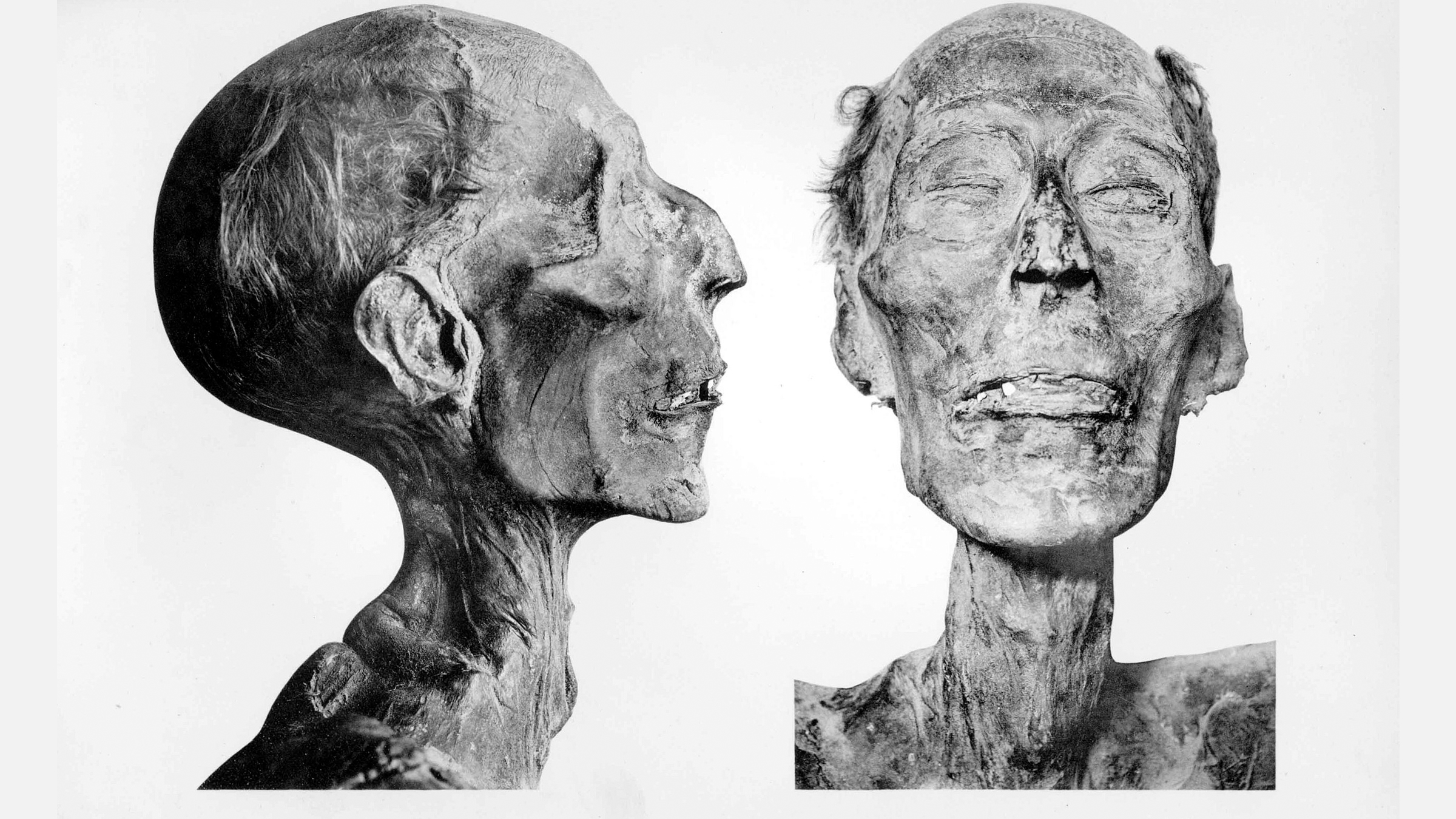Ancient Egyptian pharaoh Ramesses II's 'handsome' face revealed in striking reconstruction
Scientists have used facial reconstruction techniques to show what the Egyptian pharaoh Ramesses II looked like in his prime.

The face of the ancient Egyptian ruler Ramesses II — possibly the pharaoh of the biblical Book of Exodus who persecuted Moses and the Israelites — has been reconstructed from his mummified remains. And although the pharaoh died in his 90s, his visage has been "reverse aged" by several decades to show him in his prime, at about age 45.
"We carried a three-dimensional age regression process to remove some of the signs of ageing in order to depict him in his middle-age, at the peak of his power," Caroline Wilkinson, director of the Face Lab at Liverpool John Moores University in the United Kingdom, told Live Science in an email.
The result is a portrait of the pharaoh Ramesses II described as "handsome" by Sahar Saleem, a professor of radiology at Cairo University in Egypt and the leader of the project.
"King Ramesses II was a great warrior who ruled Egypt for 66 years," Saleem told the radiology magazine AuntMinnieEurope.com. (An "Aunt Minnie" is a radiological term for an unquestionable diagnosis.) "Bringing Ramesses' face to life in his old age and as a young man reminds the world of his legendary status," she said.
Related: 30 amazing facial reconstructions, from Stone Age shamans to King Tut's father
Mummy scan
The mummy of Ramesses II is now in the National Museum of Egyptian Civilization in Cairo. It was discovered in 1881 near Luxor in southern Egypt, and at some point after that, it was partially unwrapped to show the pharaoh's mummified features.
For the latest facial reconstruction, Saleem made a three-dimensional virtual model of the pharaoh's head and skull from new CT scan data — effectively, thousands of X-rays assembled into a 3D image — which Wilkinson then used to reconstruct his face with computer software used in criminal investigations.
Get the world’s most fascinating discoveries delivered straight to your inbox.
Next, Wilkinson used computer-generated imagery (CGI) techniques to add skin, eye and hair textures, based on what Saleem reported would have been common among Egyptians at the time — which showed what the pharaoh may have looked like when he died — and finally used the age regression software to show how he had likely appeared decades earlier. "The age regression was challenging, as this was in 3D," she said.
Wilkinson explained that the field of estimating the face of someone from their skull is dominated by two approaches: "facial approximation," which uses average data, templates and biological profiles to produce an "average" face, which might result from several different skulls; and "facial reconstruction," a more detailed attempt to determine what a particular person looked like, based on anatomical standards, measurements and morphological analysis. A related term is "facial depiction," which adds colors and textures, she said.
In this case, the team used the more detailed approach. "The face of Rameses II was produced using 3D facial reconstruction and then a 3D facial depiction process," Wilkinson said.


Famous pharaoh
The pharaoh who is said to have persecuted Moses and the Israelites in the story of Exodus is never named in the Bible, but several historians think his depiction most closely resembles Ramesses II, who was a celebrated ruler at a height of Egyptian power in the 13th century B.C.
As a result, Ramesses II — also called Ramses II or Ramesses the Great — has often been depicted in literary and film adaptations of Exodus, including in the 1956 movie "The Ten Commandments."
However, American historians Megan Bishop Moore and Brad Kelle wrote in "Biblical History and Israel's Past: The Changing Study of the Bible and History" (Eerdmans, 2011) that no archaeological evidence has been found to support the idea that the Israelites were enslaved in Egypt, nor for any of the other events described in Exodus, including the destruction of the pharaoh's army as it pursued the Israelites across the Red Sea.
Historical records attest that Ramesses II was born in about 1303 B.C. into the family of the pharaoh Seti I and that he became pharaoh when his father died in about 1279 B.C. During his reign, Ramesses II expanded the Egyptian empire as far north as modern-day Syria and built many monumental structures, including the expansion of the Karnak Temple. He died in about 1213 B.C.
Ramesses II also influenced later culture: he was the inspiration for the 1818 poem "Ozymandias" by the English poet Percy Bysshe Shelley, who had seen a huge broken statue of Ramesses II — known as Ozymandias in Greek — in the British Museum in London, leading him to pen the words "Look on my Works, ye Mighty, and despair!"
Tom Metcalfe is a freelance journalist and regular Live Science contributor who is based in London in the United Kingdom. Tom writes mainly about science, space, archaeology, the Earth and the oceans. He has also written for the BBC, NBC News, National Geographic, Scientific American, Air & Space, and many others.




